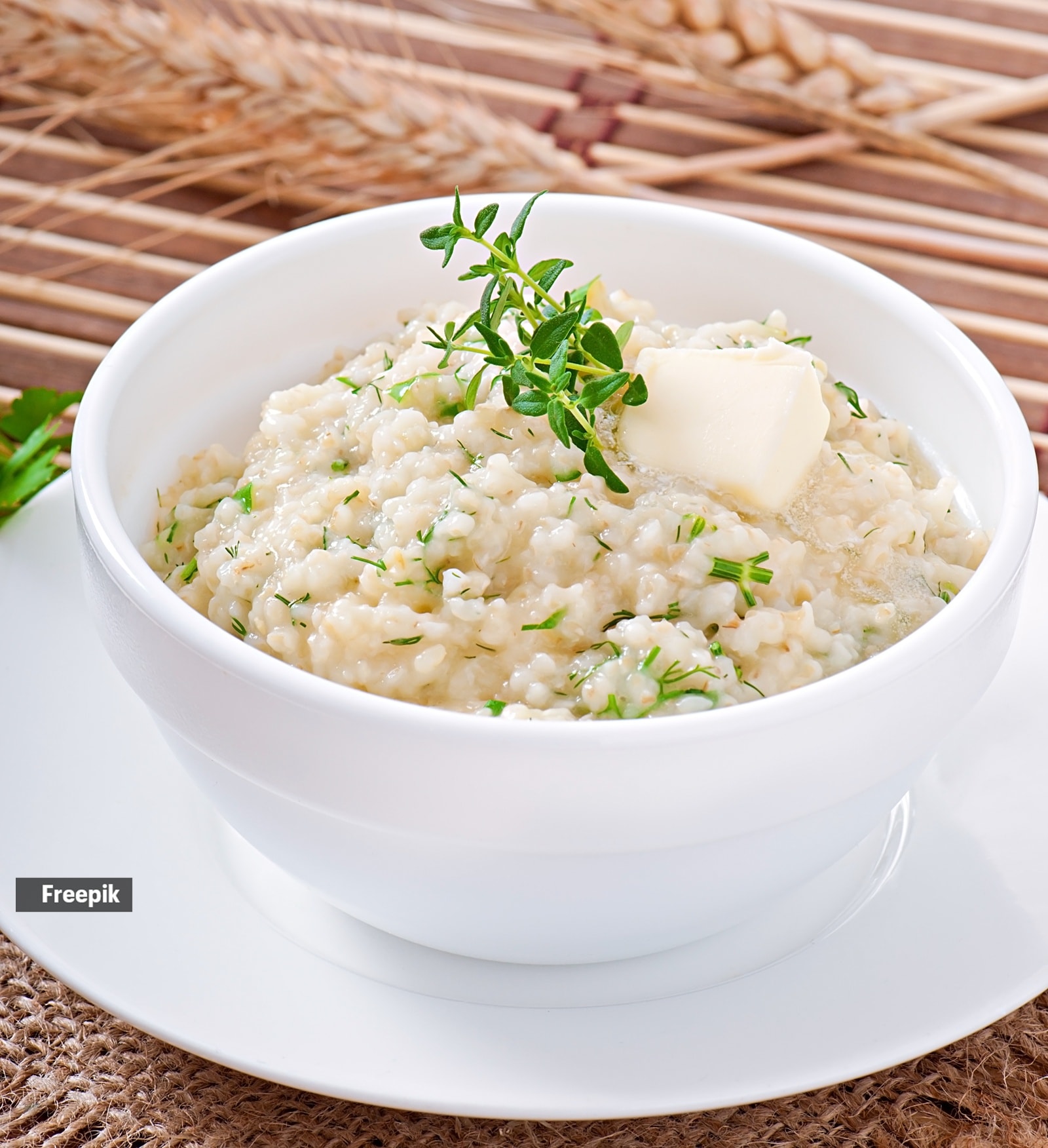📣 For more lifestyle news, click here to join our WhatsApp Channel and also follow us on Instagram
‘My annual reminder to you’: Padma Lakshmi believes thayir sadam (curd rice) is one of the ‘best hot weather dishes’
"In Tamil, this is called pesunja-sadam, which means mixed by hand," added the model turned author.
 Padma Lakshmi loves curd rice (Source: Instagram/@padmalakshmi)
Padma Lakshmi loves curd rice (Source: Instagram/@padmalakshmi)When it’s scorching outside and you crave a dish so simple and cooling in nature, only traditional recipes come in clutch. Padma Lakshmi showed us how to make a quick bowl of curd rice to cool down on hot and humid days. Taking to Instagram, she shared in the caption of her Instagram post, “My annual reminder to you that thayir sadam (yoghurt or curd rice) is one of the best hot weather dishes with little effort. Try it and tell me what you think!” adding: “In Tamil, this is called pesunja-sadam, which means mixed by hand.”
Let’s take a quick look at the health benefits of curd rice:
Mohini Dongre, dietician, Narayana Superspeciality Hospital Gurugram, told indianexpress.com that the probiotics in fermented curd help with digestion and reduce body heat, and the combination is rich in B12, calcium, potassium, and magnesium. She shared that post fermentation, nutrients and minerals increase by a power of a hundred. “It improves gut health, nutrient absorption, and immunity. It also aids in weight management and reduces blood pressure,” she said.
Other than being good for the gut, fermented curd contains beneficial bacteria like lactobacillus, which improves immunity owing to being a nutrient-rich meal. “It also provides carbohydrates from rice, protein, calcium, and vitamins from yoghurt, making it a well-balanced meal,” she added.
For those health-conscious folks looking to enhance the flavor of curd rice, Pratiksha Kadam, Chief Dietitian, Kokilaben Dhirubhai Ambani Hospital, Navi Mumbai suggested opting for fiber-filled poriyal, carrot-thoran, and beetroot stir-fried veggies as delicious accompaniments.
“To achieve flavor and aid digestion, sprinkle some mustard seeds, green chilies, ginger, curry leaves, and asafoetida sizzled on ghee or sesame oil. Some tangy roasted peanuts or pomegranate seeds make for delightful crunchy and protein-rich additions while pulled raw mango makes for incredible zesty garnishing,” she said.
 Fermented curd contains beneficial bacteria like lactobacillus, which improves immunity (Source: Freepik)
Fermented curd contains beneficial bacteria like lactobacillus, which improves immunity (Source: Freepik)
Recipe for curd rice:
Ingredients:
2 cups cooked and cooled rice (preferably long-grain basmati or sona masoori)
1 cup plain yogurt (curd)
¼ teaspoon mustard seeds
¼ teaspoon cumin seeds
A pinch of asafoetida (hing)
2-3 curry leaves
1-2 green chilies (slit lengthwise)
1 tablespoon grated coconut (optional)
Salt to taste
2 teaspoons ghee or oil
Method:
- Heat the ghee or oil in a pan. Add mustard seeds, cumin seeds, asafoetida, curry leaves, and green chilies. Temper them until the mustard seeds splutter.
- Remove the pan from heat.
- In a mixing bowl, combine the cooked and cooled rice with the plain yogurt, ensuring the rice is well coated.
- Add the tempered spices and mix well.
- Adjust salt according to your taste preference. You can optionally garnish with grated coconut, chopped coriander leaves, or a dollop of ghee.
- Serve immediately or chill for a few hours to allow the flavours to meld.
- Enjoy this refreshing and protein-rich meal on its own or with a side of pickle or papad.
Points to note
While curd rice offers potential benefits, some individuals should avoid it or consume it with caution. “People with lactose intolerance or a dairy allergy should avoid curd rice due to its dairy content,” explained Kadam. “Consuming dairy products can lead to digestive issues like bloating, gas, diarrhea, and abdominal cramps in those with lactose intolerance.”
However, those with certain medical conditions, such as kidney disease or those following a low-potassium diet, may need to limit their intake of curd rice. “Curd or yogurt is relatively high in potassium, and excessive consumption can potentially exacerbate health problems in these cases,” she further warned.
DISCLAIMER: This article is based on information from the public domain and/or the experts we spoke to. Always consult your health practitioner before starting any routine.
📣 For more lifestyle news, click here to join our WhatsApp Channel and also follow us on Instagram
- 01
- 02
- 03
- 04
- 05



























